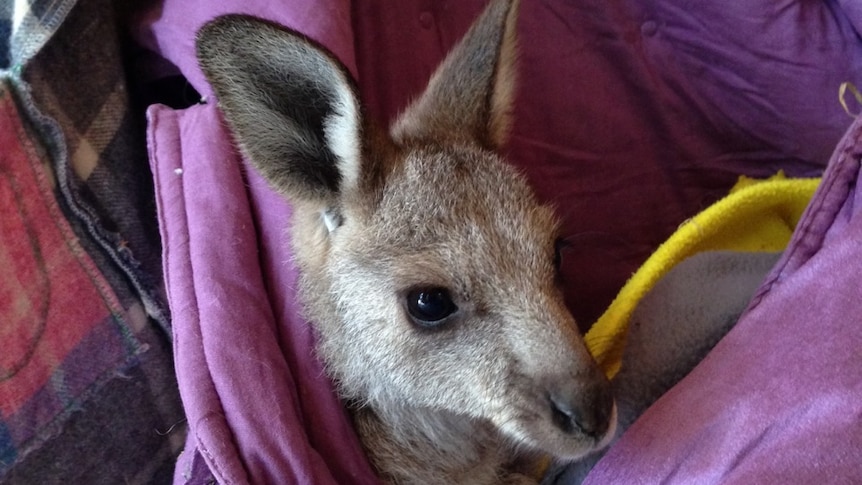
Wildlife volunteers have been working hard to rescue hundreds of animals injured in bushfires in central Victoria.
Tens of thousands of head of livestock have been euthanased and there are now hundreds of injured, starving and thirsty native animals emerging in burned areas.
Manfred Zabinskas runs a wildlife rescue business but after major fires, he and other volunteers devote dozens of hours of their time to voluntarily euthanase, and where possible rescue injured wildlife.
Space to play or pause, M to mute, left and right arrows to seek, up and down arrows for volume.LISTEN
Duration: 6 minutes 9 seconds6m
Wildlife shelters struggling to cope with influx of injured animals after the Victorian fires(Rachel Carbonell)
Mr Zabinskas says many animals in the Wallan area, a region north of Melbourne, have been badly burned by the fires.
“We try to get out as quickly as possible when it’s safe to do so and look for injured animals, so it’s probably the first approach is really to look for the ones that have been very badly affected, that have got serious burns and need to be euthanased for humane reasons,” he said.
“That’s our main focus in the early days and then as time goes on we start focusing on animals that are showing signs of more minor injuries and things that need a bit of help, go into care so they can have antibiotics, treatment to their burns and spend a bit of time in a wildlife shelter so that we can save them.”
Wildlife shelter owner Chris Litchfield has treated injured animals from central Victoria and says the rescue and recuperation work continues in the aftermath of summer bushfires.
“I’m expecting to get more as the days go by because it’s going to go on for weeks and months, animals can survive quite a long time with burnt feet but in the end, the infections get them and people are going to see them lying down and they’ll keep coming for a long time,” she said.
“But the really awful thing is the starvation because there’s no grass anymore and it’s a huge area, so these animals are still in there and they’re looking for food.”
While many people in the Wallan community have lost their homes in the bushfires, Mr Zabinskas says residents are doing all they can for injured kangaroos and joeys, as the native wildlife is what attracted many to move to the area.
“We’re not only dealing with injured wildlife but of course we’re also seeing a lot of destruction and people that have been impacted heavily,” he said.
“We meet a lot of people that have lost their homes, lost properties, lost buildings and fencing and livestock and pets and look, it’s very confronting, it’s not a nice place to be.
“It’s very depressing and distressing and I guess we just have to focus on what needs to be done and try to put all that aside.”








